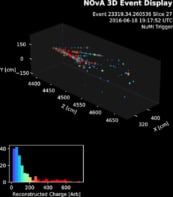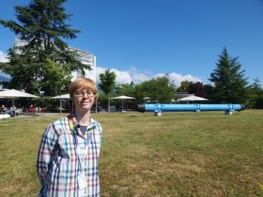
Large numbers of particle collision events could be analysed by placing them within “social networks” that organize events according to their degrees of similarity with each other. That is the claim of Patrick Komiske, Eric Metodiev and Jesse Thaler and colleagues at the Massachusetts Institute of Technology, who created the networks using an algorithm that quantifies the differences between pairs of particle jets created in real collision events at CERN’s Large Hadron Collider (LHC). The team believes their technique could be used to spot new particles not described by the Standard Model of particle physics.
High-energy collisions in particle accelerators like the LHC create exotic particles that normally do not exist in large numbers around us. These exotic particles usually decay very quickly to create large numbers of more mundane particles that are sprayed out in jets; creating patterns in space and time that point back to the exotic particles. Physicists study these jets for evidence of exotic particles not described by the Standard Model. However, vast amounts of information are produced when jets are detected and it is very difficult to search the data for hints of physics beyond the Standard Model.
Thaler’s team aimed to remedy this issue by introducing a metric they call “earth mover’s distance”, which visualises individual particle jets as “clouds” of particles in energy space. In their study, the physicists developed an algorithm that first selects pairs of these clouds, then calculates how the distributions of particles in one cloud can be rearranged into the other, while expending the least amount of energy.
On the edge
For 100,000 publicly available LHC collision events, the algorithm analysed every possible pair of jets one at a time to map out a network of collision events. They showed that the distances between events in energy space are comparable to the degrees of connection between groups in social networks. That meant that while more typical, “well-connected” collisions tended to cluster in large groups, rarer, more unusual events became outliers. By searching around the edges of these social networks, therefore, Thaler and colleagues propose that collision remnants indicative of particles beyond the Standard Model could become far easier to spot.

Higgs hunters look beyond the Standard Model
Thaler’s team now hopes to scale up their technique to analyse datasets of several million collisions, which have been made public by the LHC. They also aim to analyse past datasets known to contain important discoveries, including the Fermilab data in which the top quark was first detected in 1995. By “rediscovering” these particles without incorporating any theory into their measurements, the researchers hope to verify their technique.
The research is described in Physical Review Letters.



